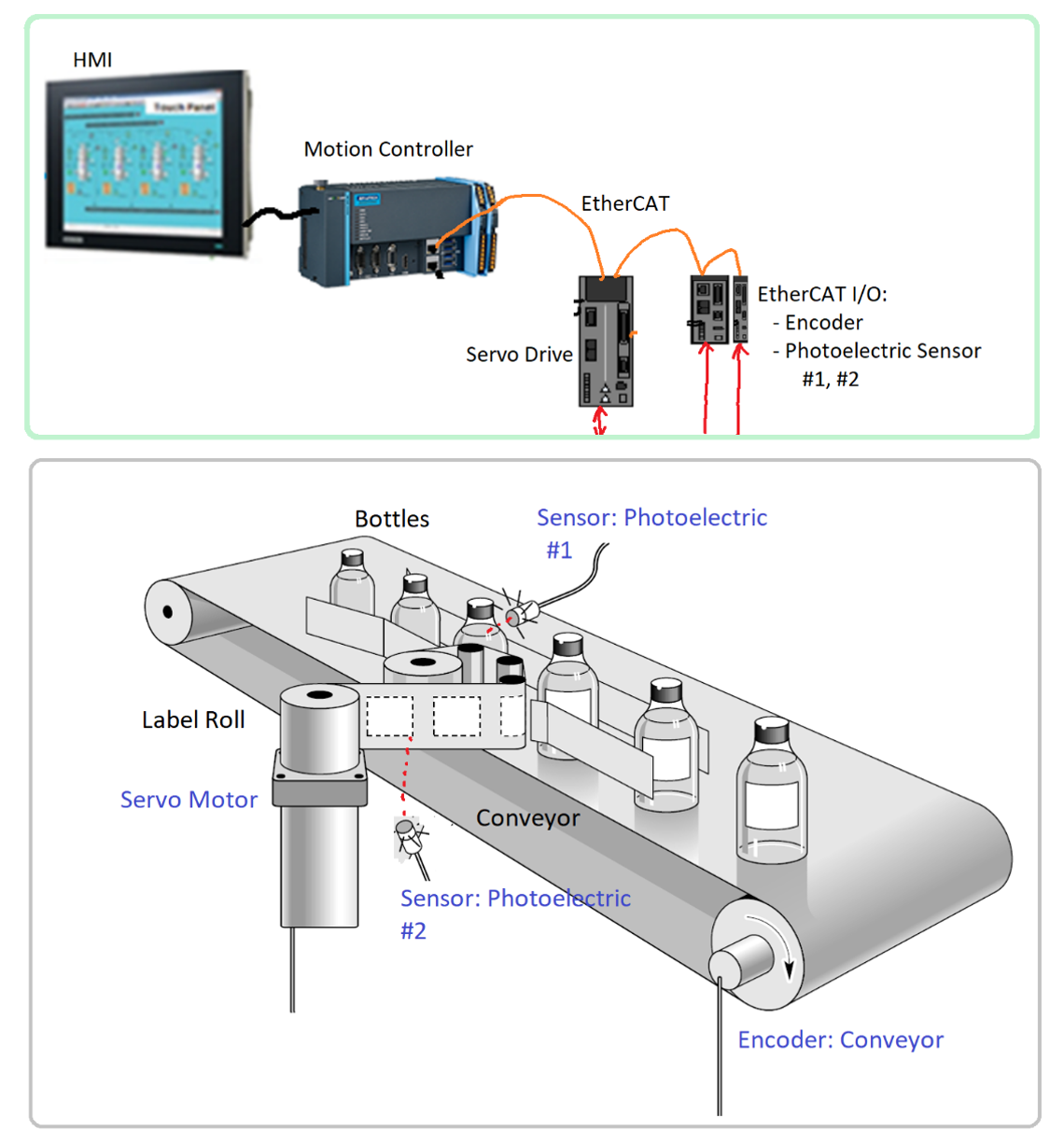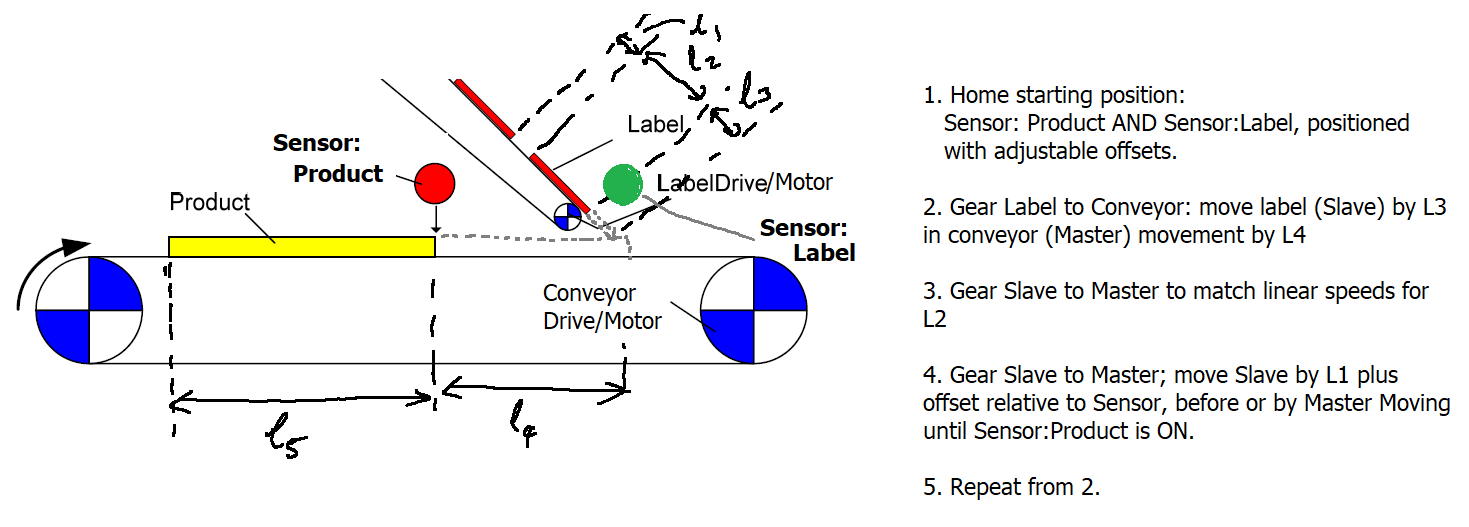Labeling Machine Motion Control System
Labels are applied on virtually every product, such as bottles, boxes and alike. A label is often pre-printed on a web (plastic or paper material) and supplied as rolls. Then, the labeling machine attaches the labels to the product (i.e. glued on box or bottle or stretch-fit over a bottle). Typical labeling speeds can be anywhere from 600 labels/minute (100 msec cycle time per label) to 3000 labels/minute (20 msec cycle time per label).
Components of the motion control system are as follows (Fig.1):
- HMI
- PLC/Motion Controller with EtherCAT Master and Slave I/O Interface module
- Two axis servo drive and motor system (or one servo drive and motor plus a Master Encoder)
- Sensors: two proximity sensors

Fig. 1 – Labeling machine automation: two axis servo control system – one master encoder or conveyor drive servo motor, and one servo motor for label roll feed motion.
Number of motion axes: The key motion control task is to place the label on the product at the right position (that is the relative position of the label and the product must be correct when they start the contact), then until the label application is completed, the label and product translational speed must be matched. Hence there are two independently actuated, but coordinated, motion axes:
-
- an axis that moves the products such as bottles. This axis may be servo driven or driven by another control system but we have an position feedback in the form of a “Master Encoder”. Product moves over a conveyor or a rotating indexer.
- an axis that moves the label relative to the product. This is a servo drive, motor with encoder axis.
If two servo axes are used, then each drive is simply interfaced to the controller as EtherCAT Slave Servo Drive. If one of them is Master Encoder, then is it interfaced to the PLC/Motion Controller as an EtherCAT Slave IO Interface Module for Encoder.
Sensors: Two (2) photoelectric ON/OFF sensors; one for the label detection, and one for the product box detection.
The PLC/motion controller is used to control the two-axis coordinated motion.
An HMI PC are used for operator interface.
This machine involves two axes of motion: Conveyor axis and Label axis. Conveyor does not have to be servo driven, although it would be desirable for it to be servo driven. Given the measurement of conveyor motion, i.e. encoder feedback signal from the conveyor drive motor or a Master Encoder attached to the conveyor, the servo drive system for the Label is controlled as a Slave to the conveyor motion (Master .
The system have two ON/OFF detection sensors: one for product (box) and one for label. If labels are already well placed accurately on the label feed-web and the variations in their position is negligible, and we have a way of accurately homing it, “Sensor #2” for Label can be omitted. Again, it is better to have this sensor against label placement error on the label feed web and against any position drifts (Fig. 2).

Fig. 2 – Labeling in packaging applications: electronically geared master-slave motion coordination plus registration sensor based position control.
A labelling machine generally includes a label supply roll which has the web of pre-printed labels and a conveyor system which moves-in and moves-out product (container boxes or bottles). In addition, it has a label application motion mechanism station where label and box/bottle are brought together and label is applied to the box/bottle. It is the control of this station that is critical for the successful application of the label. The label and box/bottle must be positioned together at the right position and translational speeds must be matched so that while both are moving, relative motion between them is zero (as if we apply the label while both box and label are in stationary condition). The basic principle of coordinated motion control is “electronic gearing” between the two axis of motion; box/bottle axis and label axis, plus a position adjustment based on a registration sensor in each label application cycle to make sure they are in the right position relative to each other.
In larger scope of a complete labeling machine, there would be three conveyors for moving the product (i.e. bottles, boxes, Fig. 3);
-
-
- infeed conveyor, 2. labeling machine conveyor, and 3. outfeed conveyor.
-
Infeed and outfeed conveyors may operate under the control of the same PLC/Motion Controller or another controller. In either case, our controller is able to adjust to the infeed and outfeed rates on demand.
